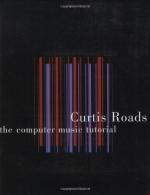|
This section contains 1,014 words (approx. 4 pages at 300 words per page) |

|
The term "computer music" encompasses a wide range of compositional activities, from the generation of conventionally notated scores using data calculated by the computer, to the direct synthesis of sound in a digital form within the computer itself, ready for conversion into audio signals via digital-to-analog converter, amplifier, and loudspeaker.
There are three basic techniques for producing sounds with a computer: sign-bit extraction, the use of hybrid digital-analog systems, and digital-to-analog conversion. Sign-bit extraction has occasionally been used for compositions of serious musical intent. Little interest persists in building hybrid digital-analog facilities because some types of signal processing, such as reverberation and filtering, are time-consuming even in the fastest of computers. Digital-to-analog conversion has become the standard technique for computer sound synthesis because it is the most versatile method of computer sound generation. Since the sound wave is constructed directly, there are almost no...
|
This section contains 1,014 words (approx. 4 pages at 300 words per page) |

|



